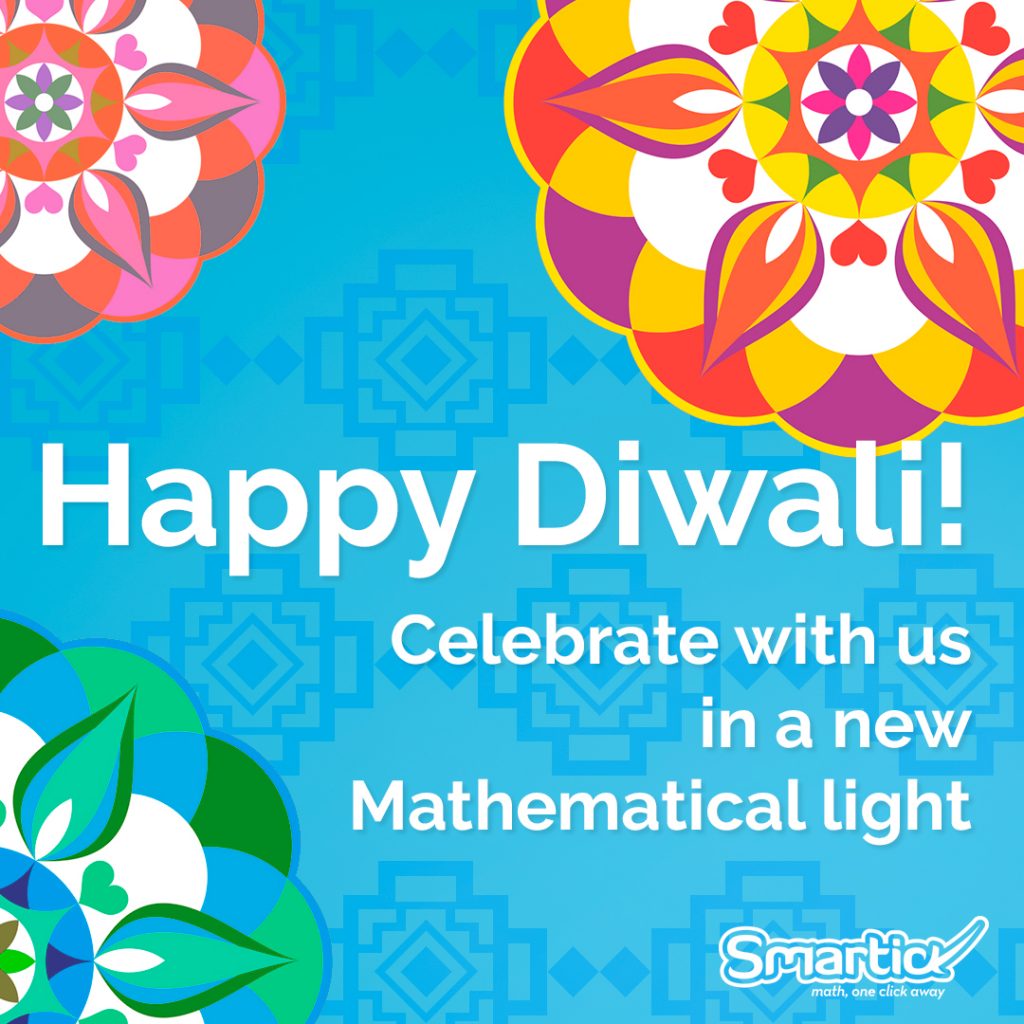Happy Diwali!
Diwali, or Deepavali, is India’s most widely celebrated and anticipated holiday of the year. This Hindu festival symbolizes good over evil, light over darkness, and knowledge over ignorance. Certainly like a confluence of many rivers into one mighty, expansive ocean, every Indian has their own Diwali based story:
- In northern India, they celebrate the story of King Rama’s return to Ayodhya after he defeated Ravana by lighting rows of clay lamps.
- In western India, the festival marks the day that Lord Vishnu, the Preserver (one of the main gods of the Hindu trinity) sent the demon King Bali to rule the netherworld.
- Southern India celebrates it as the day that Lord Krishna defeated the demon Narakasura.
- In Jainism, it marks the nirvana or spiritual awakening of Lord Mahavira on October 15, 527 B.C.
- In Sikhism, it marks the day that Guru Hargobind Ji, the Sixth Sikh Guru was freed from imprisonment.
What is Mathematical about Diwali?
Diwali comes from the Sanskrit word Deepavali (deep + avali) meaning “row of lighted lamps.”
Firstly, Diwali is a 5-day festival and the countdown begins weeks before! The festivity entails sparkling fireworks, colorful rangolis, glowing lights, deeply resonant rituals, and mouth-watering feasts, all drawn into the magic circle of community celebrations marked by warmth and goodwill.
Secondly, the festival falls on a different date every year. This is due to the Hindu lunar calendar which is based on the cycle of the moon.
Furthermore, people create Rangoli artwork on the floor of their houses or courtyards, to decorate and brighten up their homes and bring good luck. They use colored rice, dry flour, colored sand or flower petals. The designs pass from one generation to the next. Thus helping keep both the art form and the tradition alive.
Moreover, everything about this festival – crackers, boxes of sweets, lanterns, wall hangings – is based on patterns. Patterns and symmetry create a certain sense of peace and calmness that brings out order from chaos.
Now, can you imagine a Diwali without Math? Math is seamless, unbound, and present everywhere. The Universe is flooded with mysteries and it evokes us to unfold them. Therefore, be curious, be intrigued. Join Smartick and let math be your guiding light!
Above all, have fun and be safe. Happy Diwali 2018!
Learn More:
- Happy Republic Day, India!
- Alternative Methods for Multiplication: Russian and Hindu Methods
- Happy 2019 to the Smartick Family!
- Variety of Series and Patterns in Math
- January: Time for New Year’s Resolutions and Good Grades in Math
- Diwali in a new Mathematical Light! - 11/07/2018
- Smartick, the Right Math Incentive - 07/13/2018
- Smartick Method: ‘This is Fun!’ - 07/06/2018








